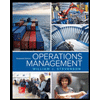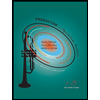Jack can produce red and green chilies T-shirts on six different machines. The following table summarizes the manufacturing costs associated with producing T-shirts on each machine along with the available capacity on each machine. If Jack received an order of 1800 T-shirts, how should Jack schedule these machines, i.e. which machine produces how many T-shirts to minimize the total cost? Machine Fixed Cost Variable Cost Capacity 1 $1000 $21 500 2 $950 $23 600 3 $875 $25 750 4 $850 $24 400 5 $800 $20 600 6 $700 $26 800 Formulate an IP to solve this problem. I suggest you write out the complete formulation before answer the multiple-choice questions. Decision Variables: Xi: number of T-shirts produced on the machine i. i=1-6. Parameters: FCi: Fixed cost of machine i, i=1-6. VCi: Variable cost of machine i, i=1-6. CAPi: Capacity of machine i, i=1-6. What should be the objective function?
Linear Programming is a mathematical and statistical tool that is used in operations management to optimize the use of the resources of an organization. This concept helps to make the best decisions and achieve organizational goals by minimizing the cost or maximizing the profit. It also helps to see which resources should be continued and which should be discontinued and slowing down productivity. There are some constraints involved when using such a model. With maximum or minimum available capacity, the decision is made to optimize resources to increase future profits. The part of maximizing cost or minimizing revenue is known as the objective function.
It has majorly two types of problems:
Assignment Problem - Here the constraints are like available working hours or the number of employees. In the objective function, we try to maximize the number of tasks to be completed.
Transportation Problem - The constraints here are like available supply left, and targeted demands to meet. In the case of objective, we try to minimize as much cost as possible.
Trending now
This is a popular solution!
Step by step
Solved in 2 steps with 3 images

Which of the following statement regarding the production setup constraint is not true?
A.
As long as M2 is larger than 400, it is large enough for the production setup constraint X2-M2Y2<=0
B.
We use Xi-MiYi<=0 where Mi is large enough number to ensure when Xi is positive, Yi is 1.
C.
We can not use Xi-XiYi as the production setup constraint because it is nonlinear.
D.
The decision variable Yi represents whether or not to use machine i.








